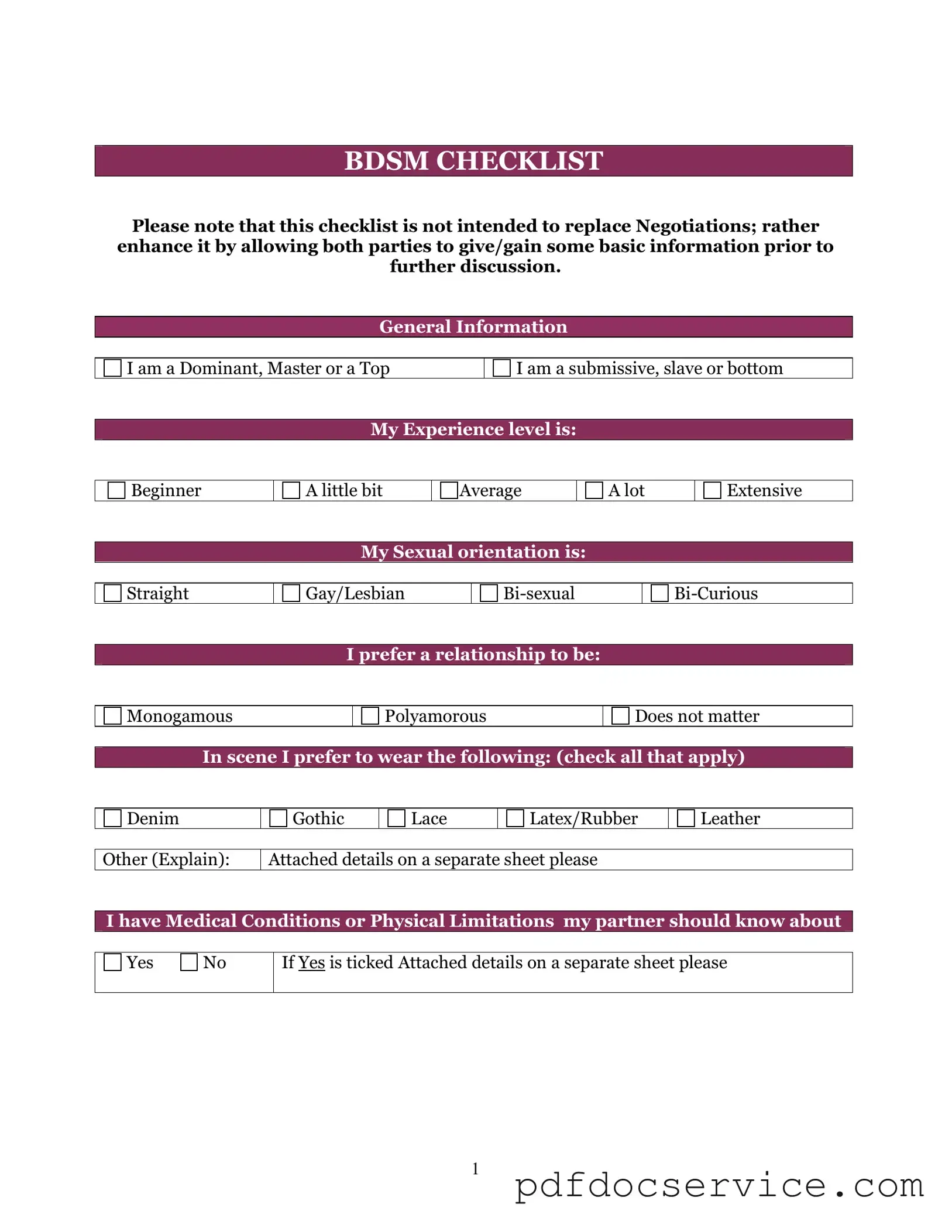Fill Your Bdsm Checklist Form
The BDSM Checklist form is a tool designed to facilitate open communication between partners about their interests, limits, and boundaries within BDSM practices. This form encourages participants to express their preferences and concerns, ensuring a safer and more consensual experience. By using the checklist, individuals can navigate their desires and establish mutual understanding in a respectful manner.
Open Bdsm Checklist Editor
